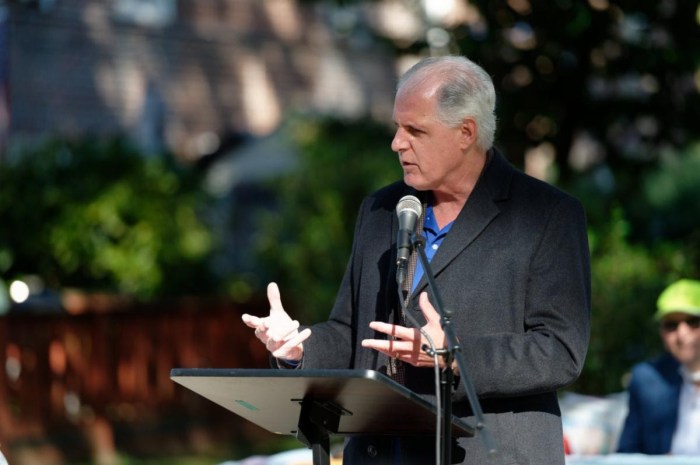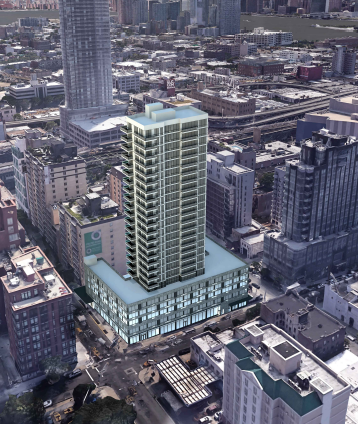By Joe Anuta
Flushing’s community board blasted a controversial rezoning of an industrial block Monday over concerns that 300,000 to 600,000 square feet of commercial property could potentially be built without providing any parking spaces, but the proposal may still get the green light from the city.
A group of property owners have been seeking for years to rezone the block between Fowler and Avery avenues and College Point Boulevard and the Van Wyck Expressway from a manufacturing zone to one that could transform the largely one- and two-story industrial businesses into five- and six-story structures that may house residential units, commercial units or a combination of both.
“The approved zone allows for opportunities that we can’t pin down,” said Chuck Apelian, vice chairman of Community Board 7. The board voted to disapprove the application, but it moves on to Borough President Helen Marshall and the City Planning Commission, which also make recommendations, before the City Council votes whether or not to go through with the change.
A group of five owners who control 85 percent of the area in question told CB 7 if the block is rezoned, the most likely result would be five new buildings with 148,100 square feet of commercial space on the first floor and approximately 378 residential units, some affordable, on the five to six floors above. Under that scenario, about 190 parking spaces would be required, although lawyer Patrick Jones, who spoke on behalf of the group, said they would likely build more.
But none of the property owners are developers, Apelian countered, leaving board members wondering if some of the plots would simply go on the auction block once the rezoning is approved.
“They are not what you would consider bona fide developers, where you have the feeling they will build what they say,” Apelian said.
If the owners of the block instead made it all commercial, they could build 300,000 total square feet of space without any parking, according to the zoning laws. If they all decided to build a different kind of commercial building that housed doctors offices or schools, they could build 600,000 square feet of space without parking, according to the zoning law.
But Jones said changing the manufacturing zone would simply bring it in line with the rest of Flushing and would allow for the properties to be used to their full potential.
In addition, Jones contended the new zone would prevent surprises while creating flexibility. For example, the maximum height of a building would be 80 feet, and much of the outside shape would be predetermined, although what went inside could vary with the needs of the neighborhood.
Apelian and other members of the board said they repeatedly asked for some assurances built into the application that would stipulate the type of development that could take place, but were told the city does not like restrictions on zoning changes for legal purposes.
Plans were uncertain for the four remaining owners, who own a house, a gas station and a live poultry operation, Jones said. They would not be forced to alter their property unless they wanted to rebuild, in which case they would be subject to the new zoning, according to Jones.
Reach reporter Joe Anuta by e-mail at januta@cnglocal.com or by phone at 718-260-4566.



































